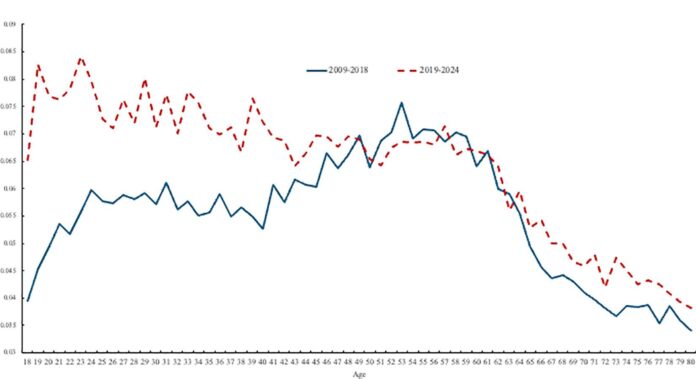The world is witnessing a dramatic shift in the landscape of mental health, especially among young people, a change so profound it’s disrupting decades of well-established scientific patterns. A new international study published in *PLOS One* by leading researchers David G. Blanchflower, Alex Bryson, and Xiaowei Xu reveals that the classic “U-shape” of well-being and accompanying “hump-shape” of unhappiness by age, observed in hundreds of studies across continents, is vanishing rapidly. In its place stands a worrying monotonic decline in ill-being with age, driven by unprecedented deteriorations in youth mental health.
For generations, social scientists have charted life satisfaction as declining into middle age, then rebounding, its mirror, a hump of despair peaking in the forties and fifties. However, the last decade has brought seismic changes. When 22-year-old Shreya watched her high school friends struggle with anxiety, she believed it was just teenage angst. But researchers now confirm that she and her peers represent a new reality. Data from the USA’s BRFSS health surveys and the UK’s Household Longitudinal Survey show youth rates of despair more than doubling since the mid-2010s, with young women hit hardest.
This global trend isn’t confined to the English-speaking world. By pooling results from the Global Minds dataset, spanning 44 nations, scientists uncovered a disturbing pattern: rates of feelings such as distress, fear, anxiety, and even suicidal thoughts now decline steadily with age, upending longstanding assumptions. In the most recent surveys, almost half of under-25s were at clinical risk for poor mental health, and one in eight classified as “distressed.” Young women fared notably worse than young men in every country.
What’s behind this reversal? Researchers cite multiple reasons. The aftermath of the Great Recession left scars on young adults’ employment prospects. The pandemic further exacerbated despair, propelling levels of anxiety and depression among adolescents to historic highs. But perhaps most important, the rise in digital technologies, especially smartphones and social media, has fueled deep dissatisfaction through relentless social comparison and exposure, as both observational studies and “natural experiments” reveal.
This transformation has grave consequences: surging rates of suicide among youth, increased antidepressant use, chronic absenteeism in schools, and more teens withdrawing from the labor market. Experts warn that until society tackles these root causes, with better mental health resources and regulation around digital technologies, the decline in youth well-being will continue. As Blanchflower and his colleagues ask: What can be done to stem this global tide of unhappiness? Their call for urgent action reverberates across countries and generations.








